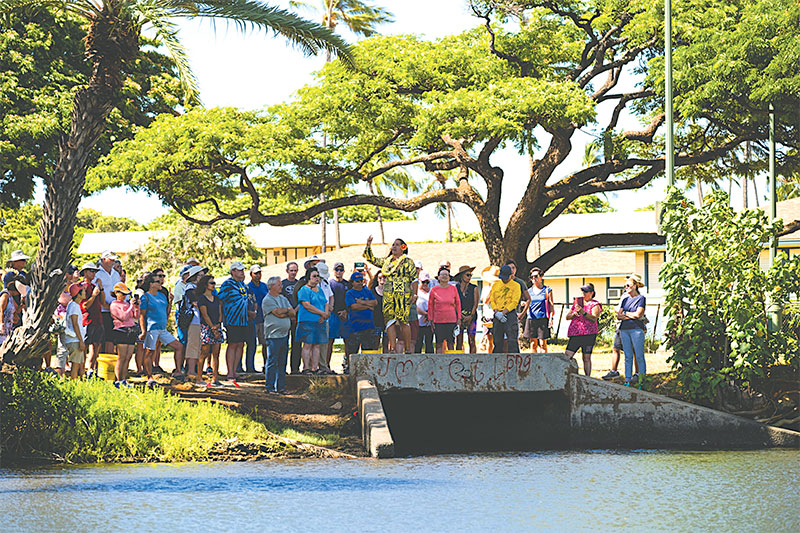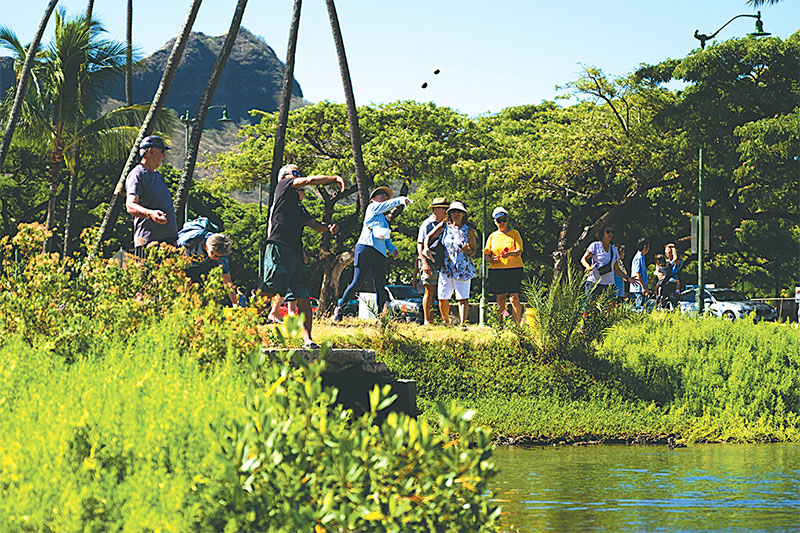The Ala Wai Will Be All Right
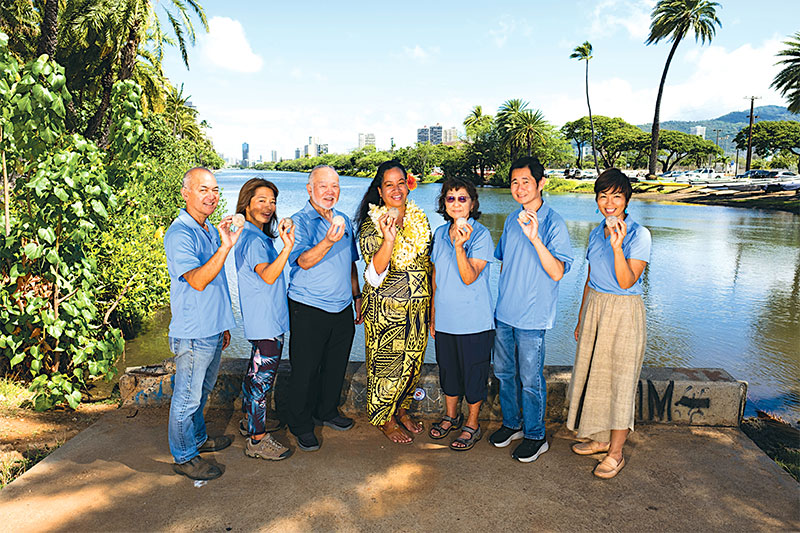
Standing at the Diamond Head-side of the canal and holding Genki balls are Genki Ala Wai Project members (from left) Hiromichi Nago, Fumiko Chun, Kenneth Kaneshiro, Pua Kamahoahoa, Mary Ann Kobayashi, Ian Pelayo and Chikako Nago.
The dedicated volunteers behind the Genki Ala Wai Project are getting their hands dirty in order to clean one of the state’s most infamous waterways.
The Ala Wai Canal — and its reputation — is far from clean. It’s the butt of countless jokes and the focal point of endless mockery, but when you stop and think about it, it’s not very funny.
Built in 1928 as a way to drain Waikīkī’s rice paddies and swamps for incoming construction, the artificial waterway used to be a popular gathering place for local ‘ohana. Canoe paddlers would glide along the glistening blue water, keiki would splash one another in a giggling fit and families would cast a line to catch that night’s dinner.
That’s hard to imagine today given the canal’s current condition. Riddled with flesh-eating bacteria, heavy metals and fecal contamination, the once-enjoyable channel is now considered a danger zone.
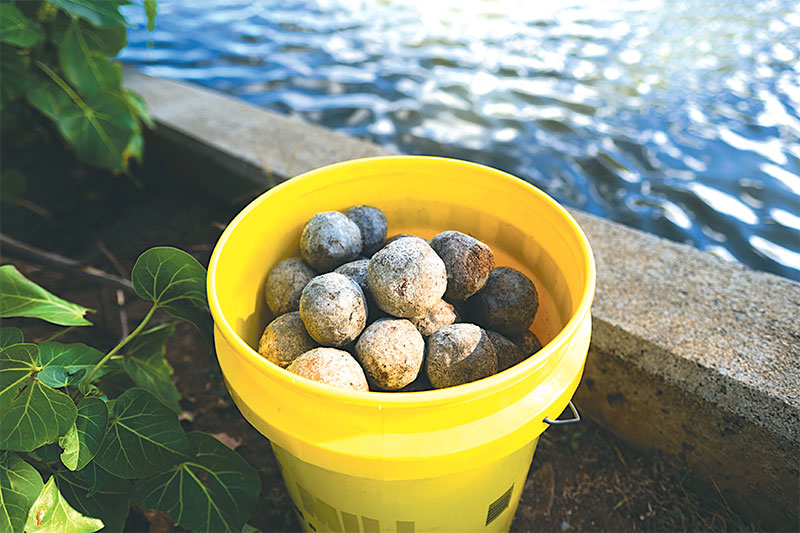
Punahou School alumni recently joined forces with the Genki Ala Wai Project, which aims to use Genki balls
Enter the ardent members behind the Genki Ala Wai Project, a branch of nonprofit Hawai‘i Exemplary State Foundation. With less than 10 in their tally, the volunteers are making waves in the canal with their mission of making the Ala Wai swimmable and fishable by 2026.
Believe it or not, the diverse group—Kenneth Kaneshiro, Pua Kamahoahoa, Leilani Kupahu-Marino Kaho‘ano, Ian Pelayo, Mary Ann Kobayashi, Fumiko Chun, and Chikako, Hiromichi and Kouri Nago — plans to accomplish this astounding goal within a few years using just a few ingredients: clay soil, rice bran, water, molasses and a special solution called effective microorganisms, or EM, for short. Combine them all and you have a Genki ball.
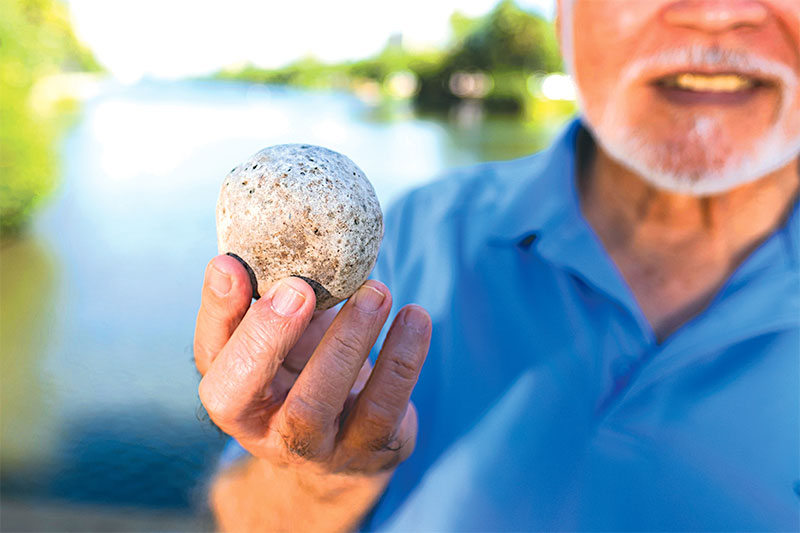
Punahou School alumni recently joined forces with the Genki Ala Wai Project, which aims to use Genki balls to purify the notorious canal by 2026.
“EM is a specific group of naturally occurring beneficial microorganisms such as lactic acid bacteria, yeast and photosynthetic bacteria,” explains Kouri, who’s the group’s social media coordinator. “EM was developed in Okinawa, Japan, by professor Teruo Higa in 1982, and is now used in more than 100 countries around the world.”
Kouri explains that soil and clean water are maintained by the diversity and balance of the microorganisms within them, and in polluted waters, like the Ala Wai, species that cannot survive in a tainted environment perish, with the ecosystem soon following. EM works to restore a healthy equilibrium, and in turn, increases the area’s self-purifi-cation abilities, which, in this case, rebuilds the ecosystem from the ground up.
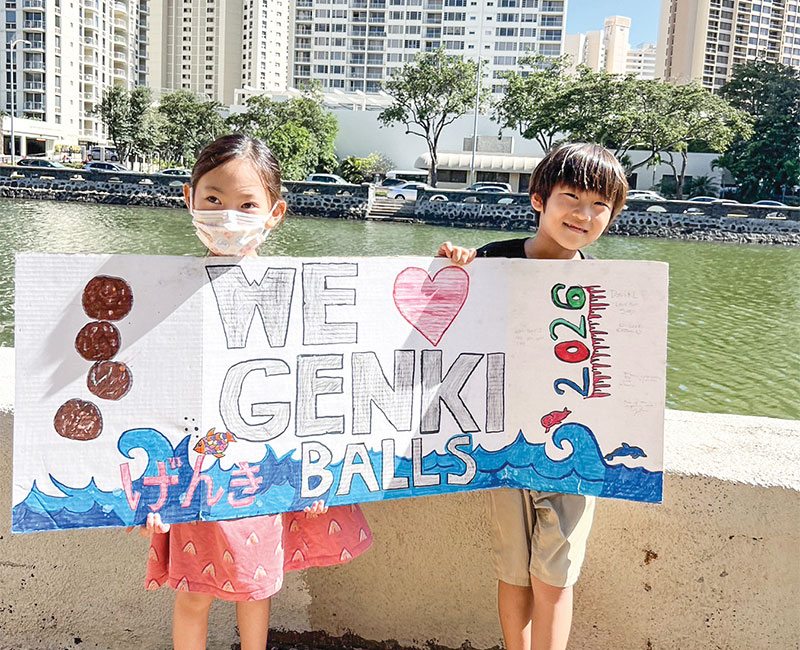
Whether they are spreading awareness or creating mud balls, local students play a large role in the success of the Genki Ala Wai Project. PHOTO COURTESY GENKI ALA WAI PROJECT
“For the Genki Ala Wai Project, we mainly use EM in the form of mud balls aka ‘Genki balls,’” says Kouri. “This method of using EM is suitable for the project because in the mud ball form, the microorganisms can sink to the bottom of the canal and start to eat up all of the sludge, which is the main pollutant.”
In July 2021, volunteers began tracking the sludge, or dead organic matter, on the Diamond Head-side of the canal. It measured 23 inches deep, which is about mid-thigh on a person of average height. Two years and thousands of the apple-sized Genki balls later, the sludge measured a mere 3 inches as of this April. Water clarity levels also improved drastically, coming down from 21 nephelometric turbidity units (the measurement used to determine the presence of suspended particles in water) to just 2. The area has also been visited by friends it hasn’t seen in a while, like Hawaiian monk seals, green sea turtles, manta rays, indigenous fish and more.
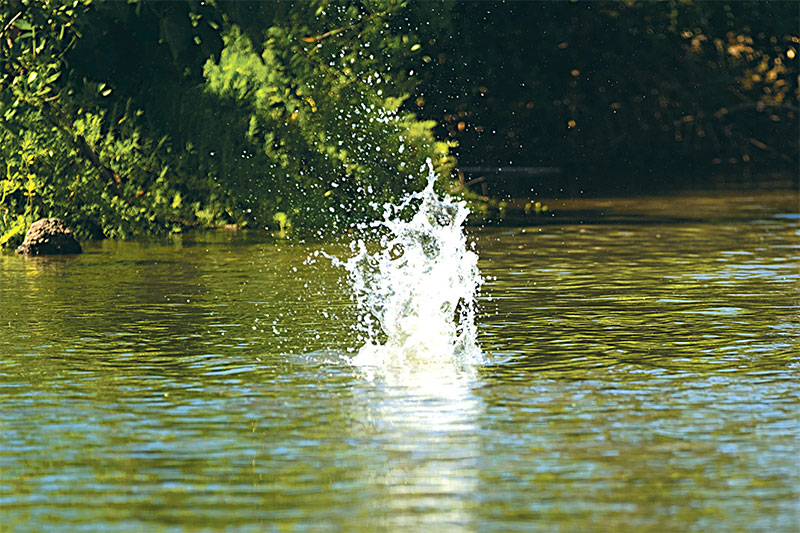
“We talk about the Ala Wai Canal all these years and how dirty it is, whose responsibility it is, how much money is spent, and we’re just pointing fingers at each other,” says Chikako, the group’s business liaison. “The Ala Wai is not somebody else’s canal, it’s our canal. People feel ownership of it, so they feel good helping it.”
Though the volunteers spend countless hours making Genki balls, securing funding, testing the water, researching and visiting local schools, it’s hard for any of them to take full credit for the project’s success thus far.
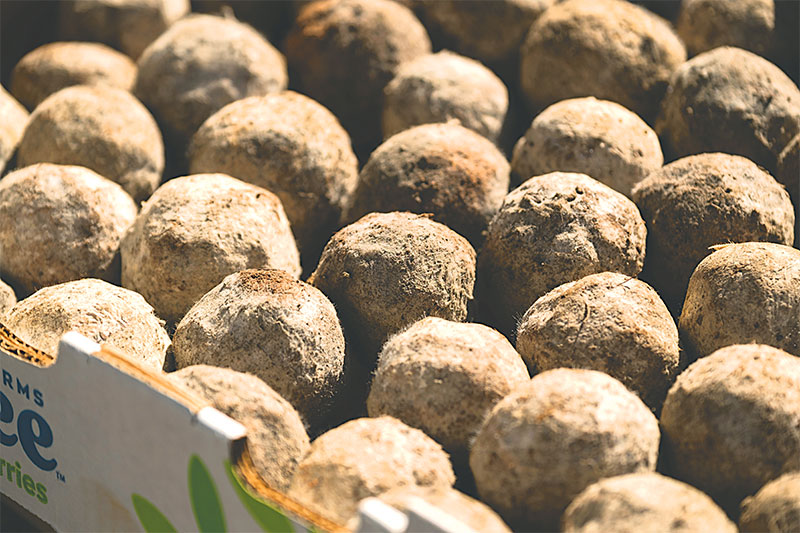
Genki balls are made by molding clay soil, rice bran, water, molasses and a special solution. Volunteers shape then toss the tennis-ball-sized spheres into Ala Wai Canal, with the hope of creating a healthier ecosystem.
“This is our joy, but it’s everybody’s contribution because it took all of the people who helped us make the Genki balls to get here — it’s their work, too,” says Chikako, who’s talking about the hundreds of hands belonging to people of all ages and backgrounds who made and threw Genki balls into the water.
“We hardly ever get to play with mud,” she says playfully.
The organization visits with everyone — from preschoolers to kūpuna in assisted living facilities, and from Girl Scout troops to hotel guests — to talk about the project and its mission, and even asks them to get their hands dirty.
“It’s really a wonderful experience to make the Genki balls and watch the fermentation process,” says Kobayashi, who serves as education coordinator. “They’ll see the microbes that look like white fibers growing out of the brown muddy balls, then it dries into a hard rock like a stone, and it’s ready to throw in the water.”
From the orbs’ formation until it’s time for the toss, keiki have a ball — and often compete in throwing contests, says Chikako — while adults and kūpuna experience a childlike wonder that’s often missed in their everyday lives.
And, as much fun as participants are having, they’re met with just as much enlightenment when Hawaiian cultural advisers share their wisdom on the edge of the Ala Wai.
“I have memories, just a few years ago, of being across the street and smelling the stench of pollution coming from the canal while the students were at recess. It was nauseating,” says Kamahoahoa, a Hawaiian studies educator at nearby elementary schools. “I also experienced flooding on the campus of Ala Wai Elementary, where the canal’s water would overflow onto sidewalks and student’s play areas.”
It’s painful for Kamahoahoa to witness these tragic occurrences. It forces her — and other locals who know of the Ala Wai’s glorious past — to remember that Waikīkī was historically a region abundant in fresh water, flowing freely from the mountain tops of Mānoa, Pālolo and Makiki.
“The waters would then flow down into huge loko i‘a (fishponds) surrounding Waikīkī shores,” she shares. “It became home to our many ali‘i (royalty).
“As a teacher, it’s difficult to teach my students of the abundant fresh water that no longer exists anymore. The simple concept of an ahupua‘a (land division from mountains to sea) and water moving from mountain to ocean isn’t a vision that our students can see.”
Thanks to the Genki Ala Wai Project, Kamahoahoa sees hope for the future.
“Although just a ‘dirt ball,’ it is an activator that encourages nature to reignite and help clean the pollution that made a huge invasive presence,” she says.
“In a time where there are water limitations being enforced, contamination devastations such as the fuel spilling of Red Hill and the construction upon Mauna Kea that would harm underground aquifers, the concern for our fresh waters is ever more urgent,” continues Kamahoahoa. “Over the past five years with working alongside the Genki Ala Wai Project, I’ve learned that one day my children’s children will have the Hawai‘i we are deserving to live.”
While the project is making impressive headway (it celebrated its 50,000th Genki ball milestone this month), there’s still a long way to go, and the clock to 2026 is ticking. But there’s little doubt in the minds of these steadfast volunteers that with a little — or a lot — of help from the community, history will be made, and the Ala Wai will be all right, after all.
Those interested in donating to the cause or getting involved can do so by emailing genkialawai@gmail.com or visiting genkialawai.org. The group is currently looking to fill several volunteer positions including grant writers, research partners, truck drivers, cleanup crews and more. Meanwhile, upcoming community events, where you can make and throw a Genki ball of your own, are set for June 24 and July 22.


